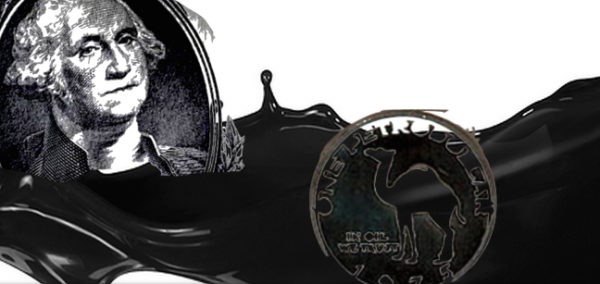Last weekend, we explained why it really all comes down to the death of the petrodollar.

China’s transition to a new currency regime was supposed to represent a move towards a greater role for the market in determining the exchange rate for the yuan. That’s not exactly what happened. As BNP’s Mole Hau hilariously described it last week, “whereas the daily fix was previously used to fix the spot rate, the PBoC now seemingly fixes the spot rate to determine the daily fix, [thus] the role of the market in determining the exchange rate has, if anything, been reduced in the short term.” Of course a reduced role for the market means a greater role for the PBoC and that, in turn, means FX reserve liquidation or, more simply, the sale of US Treasurys on a massive scale.
The liquidation of hundreds of billions in US paper made national headlines this week, as the world suddenly became aware of what it actually means when countries begin to draw down their FX reserves. But in order to truly comprehend what’s going on here, one needs to look at China’s UST liquidation in the context of the epochal shift that began to unfold 10 months ago. When it became clear late last year that Saudi Arabia was determined to use crude prices to bankrupt US shale producers and secure other “ancillary diplomatic benefits” (think leverage over Russia), it ushered in a new era for producing nations. Suddenly, the flow of petrodollars began to dry up as prices plummeted. These were dollars that for years had been recycled into USD assets in a virtuous loop for everyone involved. The demise of that system meant that the flow of exported petrodollar capital (i.e. USD recycling) suddenly turned negative for the first time in decades, as countries like Saudi Arabia looked to their stash of FX reserves to shore up their finances in the face of plunging crude. Of course the sustained downturn in oil prices did nothing to help the commodities complex more broadly and as commodity currencies plunged, the yuan’s dollar peg meant China’s export-driven economy was becoming less and less competitive. Cue the devaluation and subsequent FX market interventions.
In short, China’s FX management means that Beijing has joined the global USD asset liquidation party which was already gathering pace thanks to the unwind of the petrodollar system. To understand the implications, consider what BofAML said back in January:













Leave A Comment